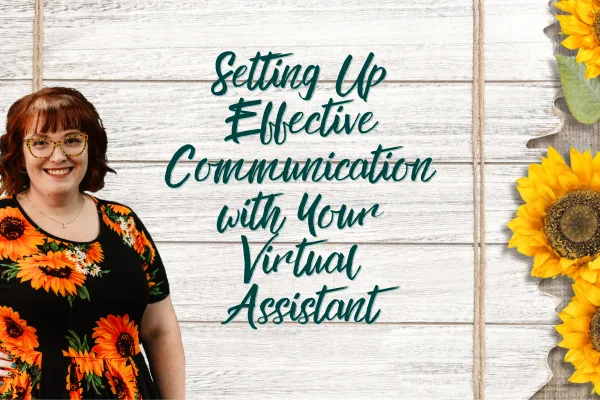
Setting Up Effective Communication with Your Virtual Assistant
Effective communication is the backbone of a successful partnership with your virtual assistant (VA). Because VAs work remotely, having clear communication practices in place is essential to ensure tasks are managed smoothly and collaboration remains strong. By choosing the right tools, setting expectations, and encouraging open dialogue, you can create a seamless workflow that enhances productivity and trust.
Setting Up Effective Communication with Your
Virtual Assistant
Setting up effective communication with your virtual assistant (VA) is essential to ensure a smooth and productive working relationship. Given the remote nature of their work, establishing clear, concise, and consistent communication channels and practices is key to managing tasks efficiently and maintaining a strong collaborative environment.
This process involves choosing the right tools, setting communication standards, and fostering an open dialogue that accommodates the dynamics of a remote partnership.
Choosing the Right Communication Tools: The first step in establishing effective communication is selecting appropriate tools that suit the nature of the work and the preferences of both parties.
For day-to-day messaging and quick updates, tools like Slack or Microsoft Teams offer instant communication and the ability to organize conversations into channels for different topics or projects.
For more formal or detailed communications, email remains a standard tool, providing a record of discussions and decisions. Video conferencing tools like Zoom or Google Meet are essential for regular face-to-face interactions, which are crucial for building rapport and discussing complex issues. Additionally, shared digital workspaces such as Google Drive or Dropbox can facilitate easy exchange and collaboration on documents and files
.
Setting Communication Standards: It’s important to establish clear expectations for communication at the outset of the VA relationship. This includes defining how often and at what times you will hold check-ins, which could be daily, weekly, or bi-weekly, depending on the workload and level of interaction required.
Setting expectations about response times is also crucial; for instance, you might expect a response within 24 hours for emails and quicker reactions for instant messaging during working hours. These standards should be mutually agreed upon to ensure they are realistic and respect both parties' time zones and other commitments.
Creating a Communication Schedule: Regular scheduled check-ins can help keep both parties aligned on current and upcoming tasks. These meetings can be used to provide feedback, clarify task requirements, and discuss any challenges that might have arisen.
They are also an opportunity for the VA to ask questions and for both sides to adjust priorities as necessary. Consistency in these meetings helps establish a routine and ensures that there are dedicated times for discussing important aspects of the work.
Encouraging Open Dialogue: Encouraging a culture of open communication is vital. VAs should feel comfortable bringing up any issues they encounter, suggesting improvements, and asking for clarification when needed.
This openness can lead to more innovative solutions and prevent small misunderstandings from turning into larger problems. It’s also important to personalize the communication to some extent, taking the time to understand the VA's working style and personal preferences, which can enhance trust and cooperation.
Using Effective Project Management Tools: Integrating project management tools like Asana, Trello, Click Up, or Monday.com can streamline communication by providing a clear overview of tasks, deadlines, and progress in one platform.
These tools allow both you and your VA to update task status, share comments, and collaborate effectively without the need for constant direct communication, thus reducing the chance of miscommunication.
Setting up effective communication with a virtual assistant involves more than just regular interactions; it requires strategic planning and the use of technology to create a structured yet flexible communication framework.
By clearly defining communication norms, using the right tools, and fostering a culture of openness, you can ensure a productive and harmonious working relationship with your virtual assistant. This not only improves project outcomes but also builds a strong foundation for long-term collaboration.
Ready to streamline your communication and boost productivity with the help of a virtual assistant? Let’s work together to make it happen! Schedule a discovery call with me today to explore how my services can support your business needs. Whether you need help with email management, scheduling, or administrative tasks, I’m here to help you optimize your workflow and free up your time. Let’s take your business efficiency to the next level!
